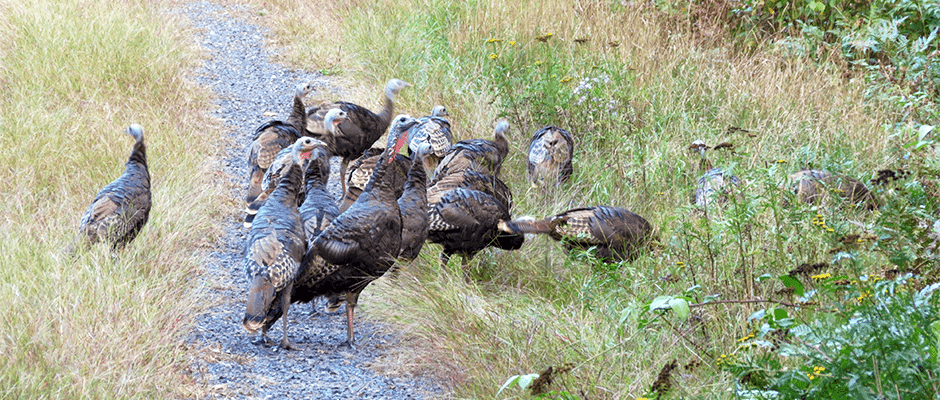Share this article
JWM study: Wisconsin wild turkeys adapt to mixed landscape
Since managers reintroduced wild turkey (Meleagris gallopavo) to Wisconsin in the mid-1970s, farming has expanded and intensified on the landscape. Despite habitat degradation, a new study suggests, these birds have adapted to nesting and brood-rearing in a range of habitat types, including forests, fields and, especially, the edges in between.
To examine landscape influences on female wild turkey’s habitat selection and survival, Christopher Pollentier, natural resources research scientist with the Wisconsin Department of Natural Resources, studied them at four sites in southwestern Wisconsin: two heavily forested sites and two more open and agricultural. He studied them at three scales: broad landscape, home range and nest site. In 2010 and 2011, his research team captured turkeys with nets during chilly winter mornings when they congregate in large flocks, radiotagged them and tracked 89 birds through the seasons.
The team found that birds in more agricultural areas fared better than those in the forest, but the birds were generalists and managed to survive in various habitats. Turkeys in forested landscapes sought open fields. Turkeys in agricultural areas looked for forest cover.
“A theme across both landscapes was a selection of forest-field edges,” said Pollentier, lead author on the paper published in the April issue of The Journal of Wildlife Management.
These findings diverge from the previously held notion that turkeys need vast forested landscapes and little open space,
Pollentier’s research also contradicted past studies on turkey habitat done on pine plantations in the southeastern U.S., which had found that the birds used these forested areas indiscriminately, with trends in their habitat choices remaining constant across scales.
“Upper Midwest agricultural states shouldn’t be managing turkeys the same way folks in the South manage turkeys,” he said.
Pollentier recommends that managers in the Midwest look at turkey habitat selection across multiple scales and conserve woodlands and maintain fields to ensure hens have space to nest and raise poults in forest-farm mosaics.
TWS members can log into the member portal to read this paper in the April issue of The Journal of Wildlife Management. Go to Publications and then The Journal of Wildlife Management.
Header Image: A flock of wild turkey hens pauses in the middle of a field in Highland, Wis. ©Catherine Khalar








